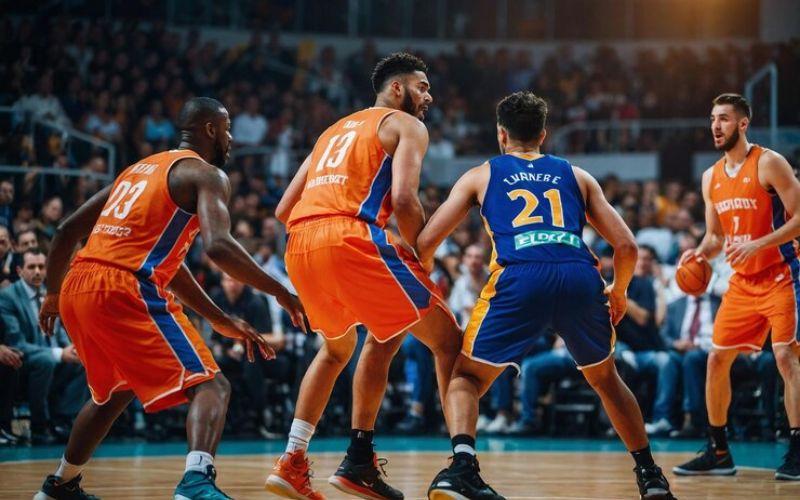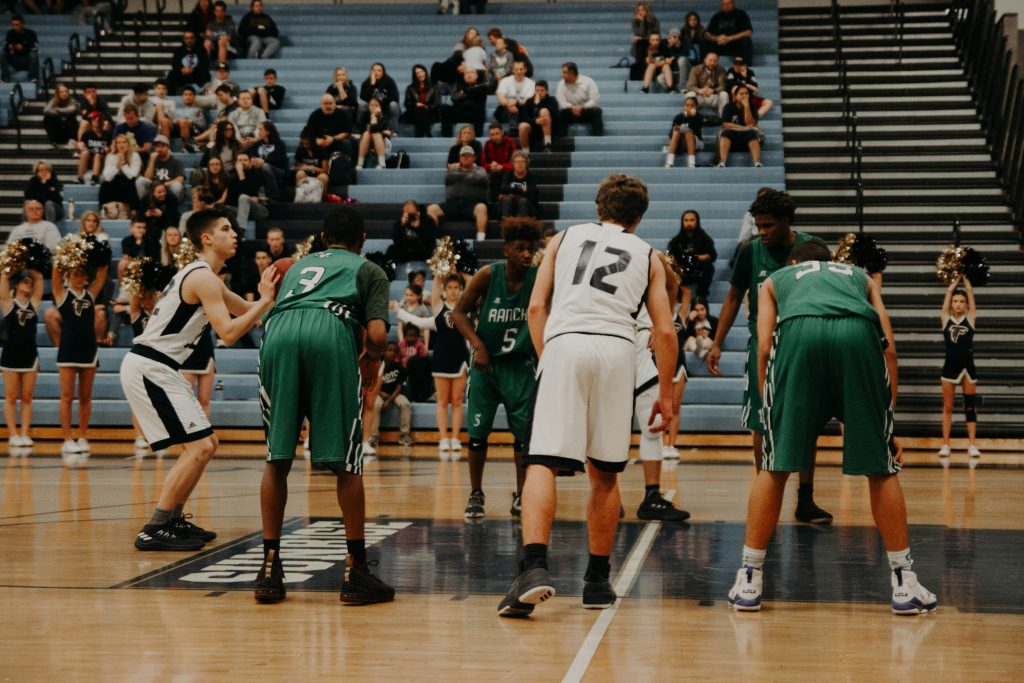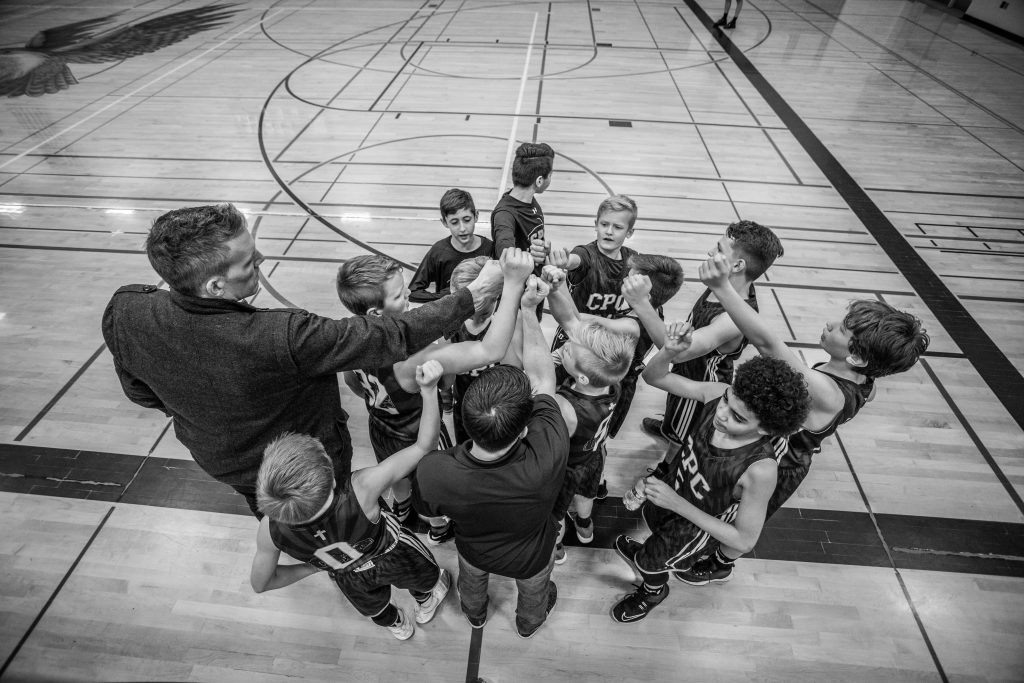How Long Does a Basketball Game Go For?

Basketball is one of the most thrilling and dynamic games globally, involving speed. Whatever your interest in basketball-watching or being a player-there is an element that determines how long the game of basketball lasts. This text will try to express the exact duration of a basketball game, factors determining the duration of the game, and team building.
Understanding Basketball Game Duration
Most basketball games are divided into quarters. Each quarter of a professional league game, including the NBA, contains 12 minutes, meaning a full game will take 48 minutes to complete, but the actual time spent watching is considerably longer since the clock stops often for fouls, timeouts, and more.
College basketball plays games in two halves, which usually last 20 minutes each, amounting to 40 minutes. On the other hand, in international play, FIBA rules divide a game into four quarters, with each quarter lasting 10 minutes, resulting in a total of 40 minutes for the whole game.
These basic game times can help fans avoid wasting time by establishing the NBA game length.
Standard Game Lengths
The game duration is determined by various levels of play; therefore, it becomes a problem of how much the fans should use their time to watch a game.
- NBA Games: The entire game takes 48 minutes because this comprises four quarters that last for 12 minutes unless there are stoppages. Generally, NBA games take about 2 to 2.5 hours on average since they consider halftime breaks, timeouts, and potential overtime.
- College Basketball: The length of NCAA games is 40 minutes, divided into two parts: two halves. Including stoppages, the average length of a college game is usually around 2 hours.
- High School Basketball: The high school basketball game usually consists of four quarters of 8 minutes each for a total playtime of 32 minutes. The average length is usually around 1.5 hours.
- International Basketball: Game length: 40 minutes. Games played under FIBA rules do not have a time limit if the clock is not stopped for over a minute, but games are usually about 2 hours long, as in the NBA or college basketball games, due to stoppages.
This is just a summary of how long a game of basketball may run, and thus, knowing standard Basketball or NBA game lengths will typically assist fans to prepare in advance how long their game may last.
Overtime in Basketball

Overtime refers to the case where the game goes on extra play. This is at the end of regulation, meaning after the standard time allocated for the game. In the NBA and FIBA, each overtime session takes 5 minutes. College basketball, overtime periods also take 5 minutes. In such a case, the game may be much longer than one had initially anticipated, especially when multiple sessions become necessary to decide a winner.
The drama of overtime adds excitement to the game, giving teams another chance to show off their skills. Fans usually appreciate such moments, as they can alter the game’s outcome and showcase the athletes’ ability to take pressure in stride.
Factors Affecting Game Time
The actual duration of a basketball game can be influenced by various factors, such as:
- Stoppages in Game: Fouls, injuries, and timeouts may trigger major stoppages in a game. In the professional leagues, each team is only allocated a certain number of timeouts that it can use to strategize or even give some other players some breathing time.
- Halftime Breaks: Teams have to pause at halftime to regroup once again, and also the fans get some time out. These breaks generally last for around 15 to 20 minutes.
- Replay Reviews: At times, referees must rewind and replay a play, and this increases the minutes in the game.
- Team Strategies: Teams may, by foul play or strategic timeouts, deliberately inflate the time of the game, and this, therefore, touches on time.
Knowing all these plays will help fans predict the possible length of a basketball game.
Team Building for Basketball Strategies

In basketball, teams must build effectively because this approach leads to cohesiveness that players work towards to achieve a common goal. The following are important in developing a basketball team building:
Building Team Cohesion
Actually, the basis of a successful basketball basically remains cohesion. Therefore, we can define this term as a mutual bond that players share, which eventually improves performance on the field. Coaches may, therefore, engage their players in team bonding activities such as having dinner together or going for a retreat.
All these events tend to make the team develop mutual relationships beyond the basketball court and enhance the feeling of togetherness and a common goal.
Enhancing Communication and Teamwork
For example, a good basketball team can achieve proper performance through effective communication. As such, an instructor has to ensure that there is an interactive session during training and playing time for the player to express his views and feelings.
The inclusion of some sort of communication drills, such as calls for plays or defensive signs rehearsal, ensures that there is proper coordination in the field. Furthermore, the necessity of practice in teamwork, such as movement and passing without the ball during a scrimmage, increases a player’s capability to harmonize and work together while performing the play.
Developing Leadership Skills
The first and most important element of team building for basketball is leadership on and off the court. The coach should identify a leader for every team and provide them with opportunities to lead the team during practice and games.
These may be practices, such as leading warm-up exercises or strategic decisions in scrimmage. Such a situation will make the player develop leadership qualities, which give players the aptitude to be more aggressive in taking the initiative to lead their mates to execute a play.
Fostering Sportsmanship and Respect
The promotion of sportsmanship and respect among players is a very important attribute of a good team environment. For this reason, it is very important that coaches emphasize fair play, respect the strengths of opponents, and encourage the players to show respectability. Community service activities can often be great devices for drawing out feelings of respect and gratitude in players by teaching that basketball is more than merely winning.
The Importance of Team Building in Basketball
Team building for basketball isn’t a complement to basketball but has to be at the core of success in basketball is going to be achieved. The ability of a well-built team might be to handle pressure, communicate, and perform together.
More time spent on building the team results in improved court performance because players begin to trust each other. There is a mutual understanding of their strengths and weaknesses. Lastly, it translates into superior results as the players become more amalgamated. Such has been found to make basketball successful.
Conclusion
In conclusion, the length of a game may vary between leagues, but knowledge of all the aspects is imperative for both the fan and the player. Other than that, the emphasis on building a team for basketball ensures that the team not only has skilled players but also those who can work well together to achieve more both on and off the court.
In addition to understanding game duration and the importance of team-building, selecting the right gear can significantly impact a basketball player’s performance. One of the most versatile options for athletes is reversible singlets, which offer dual functionality by featuring two different colors or designs on each side. This makes them perfect for practices, scrimmages, or even casual games, allowing teams to switch up their look effortlessly. If you’re looking to upgrade your basketball wardrobe, shop now for high-quality reversible singlets that provide both comfort and style on the court.
Moreover, for teams and organizations looking to outfit multiple players, you can request a quote to explore bulk purchase options for customizable reversible singlets, ensuring your team is equipped with premium gear at competitive prices.
